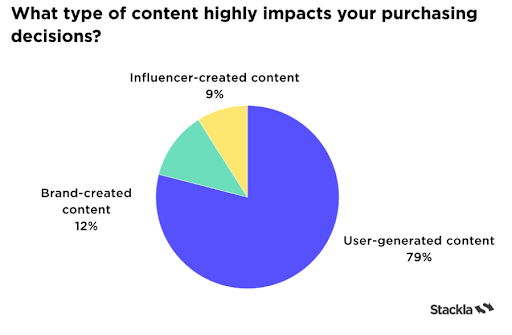Ever scroll through your favorite online store, spot a product with hundreds of rave reviews, and feel that sudden itch to buy? That, my friend, is the raw power of social proof.
Studies show that 79% of consumers trust organic, user-generated content more than they trust traditional advertising. And in the world of copywriting, that’s a goldmine.

Why? Because tapping into social proof is like giving your copy a credibility turbo-boost.
Whether you’re selling software, shoes, or a revolutionary spatula, weaving testimonials, case studies, ratings, and those oh-so-sweet social media mentions into your narrative can change the game.
And guess what? Today, I’m pulling back the curtain and dishing out actionable steps to harness this power and skyrocket your conversions.
Dive in, and let’s get your copy converting with the trust and validation every brand dreams of!
Psychology Behind Social Proof in Copywriting
Alright, let’s get a little brainy for a moment.
Ever wondered why, when a crowd forms on the street, you feel an irresistible urge to see what’s up? Or why you’re more likely to try a restaurant buzzing with people than an empty one next door?
That is social proof in action. At its core, it’s our natural instinct to look to others for cues on how to behave, especially when we’re unsure.
Digging into the science of it, the principle of conformity, researched by psychologist Solomon Asch in the 1950s, found that individuals would often choose to go along with the crowd, even when the crowd’s decision was clearly wrong.

Why? Because there’s safety in numbers. Our brains are wired to think, “If everyone else is doing it, it must be the right choice.”
And here’s the juicy bit for marketers and copywriters: the majority of consumers say they look at product reviews before making a purchase. And it doesn’t stop there.
Did you know that product reviews are they significantly more trusted than product descriptions from manufacturers? Yep, you heard it right.
So, what’s the actionable takeaway here? When you’re crafting your copy, you’re not just selling a product or service. You’re selling validation, belonging, and reassurance.
By sprinkling in some social proof magic, you’re speaking directly to that age-old part of our brains that craves communal validation. It is a recipe for skyrocketing trust and boosting those conversion rates.
The Types of Social Proof For Copywriting
Let’s get down to brass tacks. Social proof isn’t a one-size-fits-all game. Like flavors in a candy store, there’s a plethora to choose from, each with its own zing and zest. Here’s the low-down:
- Testimonials: These are your bread and butter. A juicy, genuine testimonial can instantly squash doubts. Fact: 72% of customers won’t take action until they’ve read a testimonial. So, if you’ve got happy clients singing your praises, make sure their words are front and center!
- Case Studies: Think of these as testimonials on steroids. Showcasing a deep dive into how your product or service transformed someone’s business or life? That’s gold. Case studies provide concrete results and paint a vivid picture of success. Remember, stories sell.
- Endorsements: Now, if you can get a celeb or industry expert to give your product a nod, you’re in for a ride. Even if you don’t have Taylor Swift on speed dial, endorsements from respected figures in your niche can do wonders. It’s like a seal of approval from someone your audience looks up to.
- Social Media Mentions: In today’s digital age, a tweet or an Instagram story shoutout can be as impactful as a billboard. Harness those unsolicited mentions and shares. They’re real-life evidence that folks are lovin’ what you’re putting out there.
- Ratings and Reviews: Five-star reviews are like magnets for eyes. When potential customers see a swarm of positive reviews, they’re more likely to jump on board. I mean, 88% of consumers trust online reviews as much as personal recommendations. So, make sure you’re showcasing those stellar ratings!
So, what’s the game plan? Mix and match! Layer different types of social proof in your copy for a credibility cocktail that’s simply irresistible.
By showcasing real voices and real results, you’re not just telling your audience to trust you; you’re showing them why they should.
Best Practices For Using Social Proof in Sales Copy
Alright, now that we’ve tackled the “what,” let’s dive into the “how.” But here’s the catch: you’ve gotta do it right.
Social proof can be a game-changer, but only if it’s genuine, fresh, and resonates with your peeps. So, let’s roll up those sleeves and get to work:
- Be Genuine: Trust me on this: the internet has a sixth sense for sniffing out fakes. In a world where 59% of consumers think companies have lost touch with the human element of customer experience, authenticity is your best friend. If you fake it, not only will you lose credibility, but you might also tarnish your brand’s rep. So, always keep it 100.
- Use Specifics: “Our clients love us!” sounds good, but “9 out of 10 clients reported a 50% boost in sales after using our tool” sounds freakin’ fantastic. Numbers don’t lie, and they paint a picture that words alone can’t.
- Showcase Variety: Don’t put all your eggs in one basket. A sprinkle of testimonials, a dash of ratings, a drizzle of endorsements – that’s how you whip up a credibility feast. Different folks resonate with different types of proof. So, cater to everyone!
- Update Regularly: Social proof has an expiry date. That rave review from 2009? Might not pack the same punch in 2023. Keep things fresh and current. Showcase your latest and greatest wins.
- Highlight Recognizable Names or Brands: If you’ve worked with or been endorsed by someone that even your grandma would recognize, flaunt it! Name-dropping (in a humble way, of course) can seriously ramp up trust. If a big name trusted you, others will think, “Hey, why shouldn’t I?”
Bottom line? Social proof is more than just a tool in your copywriting arsenal – it’s a connection point. It tells your audience, “Hey, you’re not alone. Others have been here, done this, and loved it.”
Do it right, and you’re not just selling a product or service; you’re building a community of trust.
Mistakes to Avoid When Using Social Proof
Alright, let’s switch gears for a sec. We’ve chatted about the how-to’s, but let’s flip the script. If you’re gonna serve up some top-notch social proof, you gotta dodge the pitfalls too.
Let’s dive into some common oopsies I’ve seen brands make (and trust me, you don’t wanna join that club):
- Overloading the Audience: Bombarding your audience with a zillion testimonials on a single page? Big no-no. In a world where the average human attention span is about 8 seconds (yep, even shorter than a goldfish), less is often more. Cherry-pick the best and make them shine.
- Using Outdated Testimonials: Remember when I mentioned that fresh social proof packs a punch? Well, if your latest testimonial is from the time when fidget spinners were a thing, you might wanna update. Stale proof can make you look out of touch.
- Not Addressing Negative Reviews: Here’s a little secret: it’s not about having zero bad reviews; it’s about how you handle them. Around 45% of consumers say they’re more likely to visit a business that responds to negative reviews. So, embrace feedback, make amends, and show you care.
- Generic Praise: “Great product!” or “Awesome service!” is cool and all, but what does it really tell your audience? Nada. Specific reviews that tackle real benefits? Now that’s the stuff that turns heads and opens wallets.
- Not Leveraging User-Generated Content: Fans posting pics or writing about your product? That’s pure gold! Many users find visual UGC more influential than brand photos. So, if you’ve got fans sharing the love, make sure you’re showcasing it!
Social proof, when done right, is like rocket fuel for your brand’s credibility. But, like any fuel, handle with care. Avoid these pitfalls, stay genuine, and always – I mean, always – keep your audience’s needs at heart.
Measuring Social Proof Success and Performance
Alright, you’ve got the tips, the tricks, and the 101 on avoiding those pesky pitfalls. But here’s the million-dollar question: How do you know if all this social proof mojo is actually working?
Buckle up, ’cause it’s time to dive deep into the metrics and see if that social proof is really making your copy pop.
- Conversion Rate Lift: This is the biggie. If you’ve integrated testimonials, reviews, or other forms of social proof, keep a keen eye on how they’re impacting your conversion rates. According to studies, showcasing product reviews can increase conversions by a whopping 270%. So, are you seeing a spike? If not, time for a tweak!
- Bounce Rate: Added a bunch of juicy testimonials on your landing page? Check if visitors are sticking around longer or bouncing off faster than a hot potato. A lowered bounce rate post-social proof integration is a solid win.
- Engagement Metrics: If users are spending more time on your pages and interacting more (like clicking on testimonials or case study links), you’re onto something. Engagement is a clear signal that your audience is vibing with what they see.
- Feedback and Direct Responses: Getting emails or direct messages commenting on your testimonials or user reviews? That’s real-time feedback, folks. Whether it’s a thumbs-up or constructive criticism, listen up and adjust accordingly.
- A/B Testing: Here’s a pro tip: Test pages with and without social proof. Seeing which version gets more love can be super enlightening. Remember, the proof is in the pudding – or in this case, the A/B test.
Now, the real magic happens when you take this data, analyze it, and iterate. Metrics don’t just give you numbers; they tell a story. Dive into that story, and you’ll discover just how your audience is vibing with your brand.
So, keep measuring, keep iterating, and let that social proof work itself.
Wrapping up Social Proof in Copywriting
Alright, let’s bring this home. We’ve journeyed through the science of why our brains go gaga for social proof, explored its many flavors, danced around common pitfalls, and even geeked out on metrics. Whew! Quite the ride, huh?
But here’s the core of it all: In a digital landscape overflowing with options, trust is the most prized currency. And social proof? That’s your golden ticket to building it. Remember, consumers trust organic, user-generated content more than traditional advertising.
So, the next time you’re staring at that blinking cursor, wondering how to make your copy truly resonate, think about weaving in some of that real-world validation. Whether it’s a glowing testimonial, a powerful case study, or a shoutout from a celeb, social proof can take your copy from “meh” to “wowzers!”
If you want to master these concepts and more, check out my copywriting programs that include mentoring from me, a 7-figure copywriter.














